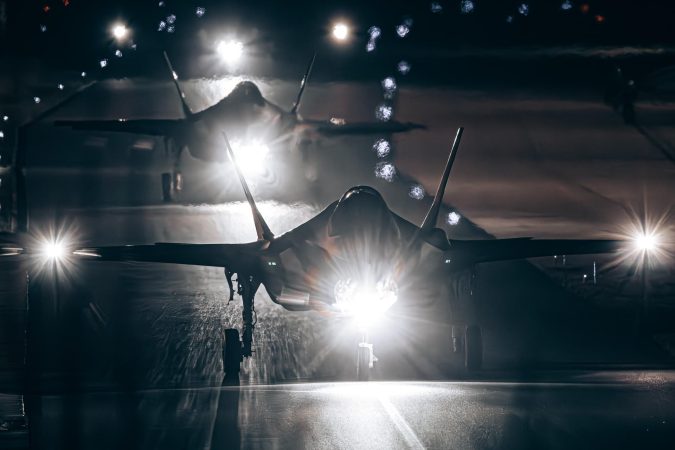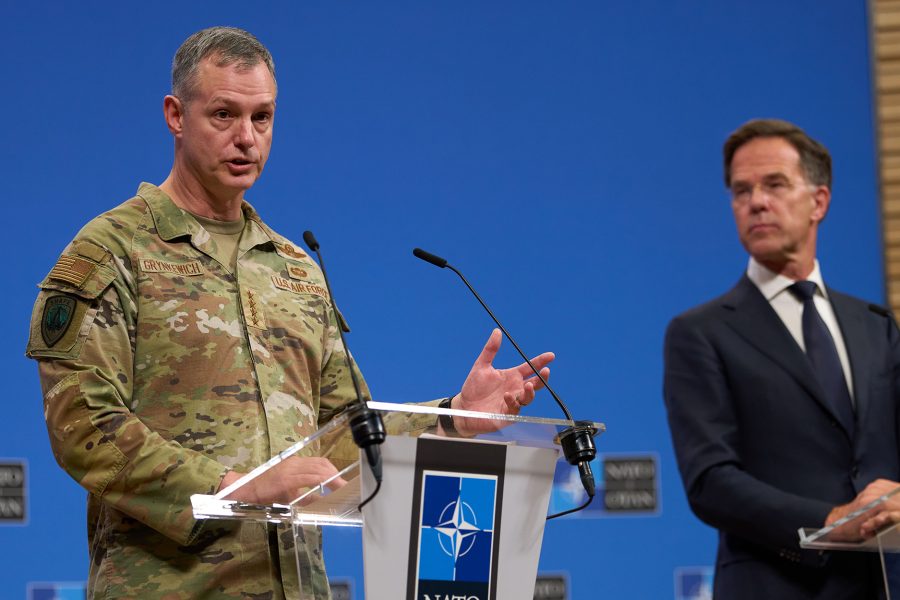NATO is bolstering defenses on its eastern border with Russia following the intrusion of Russian drones into the alliance’s airspace in Poland earlier this week. The extraordinary incident marked the first time the alliance has conducted a collective self-defense air-to-air engagement against Russia, which has framed its war in Ukraine as a proxy war with NATO and the West.
The alliance launched a new operation called Eastern Sentry on Sept. 12 in response, NATO Secretary General Mark Rutte and Supreme Allied Commander Europe U.S. Air Force Gen. Alexus G. Grynkewich announced at a press conference at NATO headquarters outside of Brussels.
Eastern Sentry’s immediate focus is on air defense, especially drones, according to the two leaders.
“Eastern Sentry will be flexible and agile, delivering even more focused deterrence and defense exactly when and where needed,” Grynkewich said. “It will include additional enhanced capabilities, it will integrate air and ground-based defenses, and it will increase information sharing amongst nations. Foremost, it will even further strengthen our posture to shield and protect the alliance.”
The increased forces will include additional military equipment from France, Germany, Denmark, the U.K., and other nations, including airpower in the form of three French Rafales, two Danish F-16s, and four German Eurofighters. An air defense warship is also part of the operation. No additional U.S. military assets were previewed by Rutte and Grynkewich. The Trump administration has said Europe should primarily be in charge of defending itself. The French military said it had already begun flying operations as part of Eastern Sentry Sept. 13.
“Integrated and layered air defenses, both air and ground-based, will be key as we move forward,” Grynkewich, NATO’s top military commander and the boss of U.S. European Command, told reporters. “Although the immediacy of our focus is on Poland, this situation transcends the borders of one nation. What affects one ally affects us all. This is an issue that impacts all of the alliance, and we will treat it as such.”
Poland has invoked NATO’s Article IV clause, which calls for consultations to discuss a joint NATO response to a threat, just the eighth time in the alliance’s 76-year history that such talks have taken place.
NATO, however, offered limited details on the scope and timeline of the new operation, which Grynkewich said was to be determined.
“I envision it is going to cover the entire eastern flank of the alliance, from the High North to the Black Sea and the Mediterranean—anywhere that we might see a threat from the Russians,” he said.
Eastern Sentry is modeled on an operation launched in the Baltic Sea early this year known as Baltic Sentry that aims to defend critical infrastructure from Russian attacks.
Rutte said Eastern Sentry will “feature elements designed to address the particular challenges associated with the use of drones.”

Dutch F-35s and Polish F-16s were scrambled in response to the Russian drones, which shut down major airports in the country.
It is unclear whether Russia intentionally violated Polish airspace, Western officials told Air & Space Forces Magazine, an account which the NATO leaders echoed Sept. 12. Polish officials have said the act was intentional.
“The truth is that at this moment, we are still assessing,” Rutte said.
Multiple Russian drones that entered Polish airspace were shot down by the Dutch F-35s while the rest crashed, Western officials told Air & Space Forces Magazine. The Dutch F-35s had been operating from Poland since Sept. 1 as part of NATO’s enhanced air policing effort on its eastern flank since Russia’s 2022 invasion of Ukraine. NATO also launched an Italian airborne early warning AWACS plane that was based in Estonia and it supported the operation with an aerial refueling tanker.
“Whatever the intent was behind this, yes or no, and whether that was a mistake or not, we are still looking into that. It was reckless, it was unacceptable. These are Russian drones, and it is extremely serious,” Grynkewich said.
Grynkewich previously dealt with the threat of myriads of drones as head of Air Forces Central from 2022-2024, including during America’s April 2024 defense of Israel led by F-15E Strike Eagles and F-16 Fighting Falcons. The U.S. Air Force has since taken those lessons and applied new tactics and weapons to better fend off more drones, and to do so relatively inexpensively.
“With additional resources, we’ll be able to plug gaps in the line, we’ll be able to concentrate forces where we need to defend at a moment of a particular threat, and we’ll have much better communication across the entire eastern flank,” Grynkewich said.


